Greetings!
This week Uncle Travelling Matt heads into Albania’s wild northern lands, the infamous Accursed Mountains where blood feuds once reigned supreme and Enver Hoxha made his concrete bunkers in secret…
Keep travelling!
Uncle Travelling Matt
Links to all parts of the travelogue:
Part Four
I didn’t want to go to Shkodra that morning. In fact, I didn’t want to go anywhere. What swung it was that I didn’t want to stay in bed either as, after having lain in it for over a day, I now had creasing backache. That coupled with the fact that time was ticking on meant that I forced myself out of the Hotel Alpin feeling weak and miserable, so much so indeed, that I even took a taxi to the place where the bus left from about half a kilometre away. By the bus I consumed a burek and a dhallë[1] which made me feel a little better and indeed, by the time we pulled into Shkodra itself I felt fine. That’s what food poisoning is like; it comes, leaves you feeling like shit for a day, and then it leaves. And mine, thank God, had left.
The drive was nothing spectacular, the road following the plains with the mountains far to the right. We followed the railway line for large sections and every time I saw it I half wished that I was travelling by train instead, (because I prefer railways), and half not, (because this was an Albanian railway). Aside from that, the only point of interest was in the town of Lezha where we passed a set of unimpressive ruins topped by a ridiculous classical canopy, obviously built to both protect them from the elements and draw attention to them. I was immediately reminded of pictures that I’ve seen of Stalin’s birthplace in Gori, Georgia, where a humble peasant’s hut is covered (and overpowered) by a similar structure. Question was what was so important about these ruins to merit such protection? A dip into the guidebook soon revealed the answer: the ruins were the remains of Lezha’s mediaeval cathedral which, more importantly, was the place where that hero of heroes, Skanderbeg, was buried.
The Tomb of Skanderbeg: understated
You hear Skanderbeg’s name and see his image all over Albania and everybody holds him in the highest regard. Born Gjergj Kastrioti, he was a tribal chieftain in the 15th century who managed to achieve the almost impossible in uniting the continually warring Albanian tribes and then defeating the omnipotent Ottoman Empire in battle again and again and again. Indeed, in his entire career he only ever lost two battles against the Turks and when he died in 1468 Albania was still free and united. It was not to last however and the Ottoman attacks continued until in 1479 the last Albanian fortress, Rozafa Castle near Shkodra fell. One might think therefore, that all his efforts had been in vain, yet many historians believe that his effective stalling of the Ottomans for almost forty years when they were at the peak of their powers meant that Italy escaped Turkish invasion; an Italy that was not only the spiritual heart of Western Europe but also the breeding ground for the Renaissance that spawned the Modern World. It is one of history’s great ifs…
Shkodra was a city that I had heard much about prior to my arrival, largely due to one of my students being a native of the place. In class he would regularly launch into long eulogies its beauty and friendliness before then thinking twice and warning me that it was a poor, dirty place, nothing special, please sir, don’t get your hopes up.
It was the latter impression that seemed the more accurate as the bus dropped me off at the roundabout in the centre of town. The Five Heroes monument in the centre was being demolished to be replaced by what looked like a collection of pipes whilst I was hassled from every angle by taxi drivers wishing to ferry me to Montenegro.
The famous Pipes of Shkodra
The cheapest hotel listed in the guidebook was also the one that, by chance, I had been dropped right next to and so I ventured into the Hotel Rozafa to see if they any room for a (not-so) little one. As it turned out, room was one thing that they had plenty of; the Rozafa was an enormous eight-storey block with far more rooms than guests. Nonetheless, the one they found for me was on the fifth floor and the lift was broken. Still, I needed the exercise and the views were great, and despite the fact that the place obviously hadn’t been renovated since the advent of democracy, I knew that I had chosen wisely. One hears so much you see, of the hotels of the communist era, huge hulking places with unfriendly staff who cared not if you stayed so that as a consequence these hotels were always virtually empty. My travels however, all in a post-communist era, had always been in rather pleasant, small-scale hotels or guesthouses like the Alpin or Gjirokastra where the staff did want your money and so smiled at least. At the Rozafa however, time had stood still and I appeared to be the only guest in its eight floors of rooms where the electricity would cut out unexpectedly and air-con was a concept for the future. The icing on the cake though, was the Albturist rug in the centre of my shoddy room. It was a shithole, yes, but by God, it was also a living history lesson!
And very cheap.
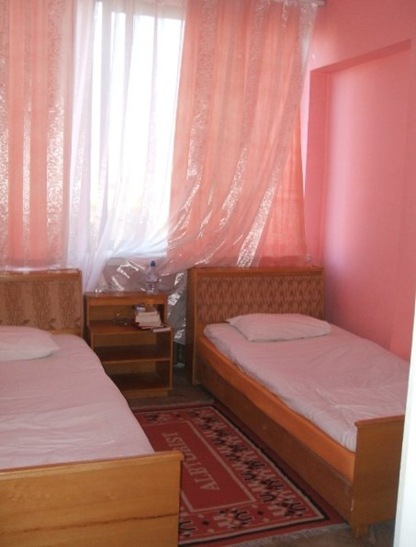 Hotel Rozafa: Proletarian luxury…
Hotel Rozafa: Proletarian luxury…
After dumping my bag I went back down the five flights of stairs to grab a bite to eat, (first proper meal since the Juvenilija pizza!), and then to see the sights of Shkodra. My first impression, I soon discovered, had been misleading. The city was in fact, quite pleasant with an altogether different atmosphere to the other Albanian cities that I’d visited. This was partially due to the Italian factor – Shkodra was Venetian-owned until 1479 and most of her population have either emigrated to Italy or learnt her language. The historical heart of the city, Fushë Çelë, looked as if it had been transported brick by brick from across the Adriatic and if my stomach had not been quite so unsettled and my memories so vivid, I might have been tempted to stop for a pizza.
Most of all though, it is religion that makes Shkodra seem so different. Religion takes very much a back seat in Albania. By European standards it probably always has, the Albanians are notorious for changing their faith for more earthly rather than spiritual reasons, but after the harsh atheism of the Hoxha era, then religions minor standing has been all the more guaranteed. Except that is, in Shkodra. The city is the centre of Albanian Catholicism and has several large Catholic churches as well as the obligatory new Orthodox church and several impressive new mosques, the largest being an Egyptian-financed one in the park opposite Hotel Rozafa that has a distinctive, Ottoman-cum-Art Deco design. In Shkodra religion seems to play a part in daily life that it has long since retired from elsewhere in the country.
Mother Teresa stands by Shkodra’s new mosque
In the Fushë Çelë I met a charming elderly gentleman who informed me in grammatically-precise English that he had trained as a medical doctor in Budapest in his youth. I spoke warmly of that city and its thermal baths which pleased him and he walked with me to the Catholic cathedral. En route he informed me that Shkodra was the centre of Roman Catholicism in Albania and that most people there were Catholics, including his wife, although he himself was Orthodox, not that that was a problem, for above all, one is an Albanian.
The cathedral itself was an enormous 19th century building with a new bell tower at its side. Inside it was spacious and pleasant, and for me the highlight was an enormous painting by that altar that depicted the laying of the first stone with an interested crowd of priests, Ottoman officials, foreign dignitaries and the faithful looking on. Later on, the curator of the Rozafa Castle Museum informed me that the man laying the stone had in fact been the chief imam of the city and that the cathedral had been financed by both Austria and Italy as a direct result of Ottoman reforms relating to millets and religion that I had just been reading about in Misha Glenny’s book. He also explained that the tower was new as the communists had demolished the original due to it being such a potent symbol of religious belief but the church itself had escaped destruction by being converted into a Hall of Sports, its central portion being used as a handball stadium with banks of seating on either side.
Shkodra’s Catholic Cathedral
Following my tour of the city itself, I took a taxi out to see Shkodra’s main attraction, the spectacular Rozafa Castle. My driver, an enthusiastic Catholic named Gjergj mixed Italian, German and English with abandon and held some strong opinions on his Muslim neighbours. Whenever we passed a mosque he would exclaim “Tutti Musulmani! Tutti sheiser! Albania is Bosnia! Albania is Afghanistan! Tutti xhami![2] Tutti sheiser!” before crossing himself whenever a church reassuringly came into view. Interestingly, this was the only expression of religious intolerance that I encountered whilst in Albania.
Rozafa Castle was shaded by Gjirokastra’s Citadel but that was about the only criticism that one could level at it. Every side commanded spectacular views whilst the ruins themselves were of great interest. They are largely Venetian and Ottoman and indeed Rozafa was the last Albanian fortress to fall to the Turks back in 1479 which gives us some indication at both its significance and strength. Largely deserted and given over to wild flowers these days, I enjoyed seeking out stairways that led down to underground chambers or out onto the ramparts or climbing over the fascinating former mosque and cathedral.
Shkodra from Rozafa Castle
It is at the far end of the castle however, where most of the action is. There, built into the walls, is a delightful restaurant where I enjoyed a coffee looking out over where the rivers Kir and Drin converge before heading next-door into the old Venetian ammunition store which now houses a museum.
That museum was good in itself; the building was done out sympathetically and there were several items of interest including some old Ottoman cannonballs that had been fired during the 1479 siege and a scale model of the castle and city during the 18th century. What made it for me though, were not the displays but the curator.
I never asked his name, but this man was remarkable. In fluent English he told me all about the castle’s history from the legend of its foundation, (when a woman was bricked up in the wall with only her breast exposed so that she could feed her baby), to the time of Hoxha, (who I learnt had banned Edith Durham’s books on the region – one has to ask, why???). He answered all my awkward questions and we talked at length on the Balkans, the Tanzimat Reforms of the Ottoman Empire, on why the city of Shkodra had been moved from around the foot of the castle to its present site some several miles away, (apparently the river had kept changing its course and flooding the old city). Finally I thanked him for making his country’s history and culture come alive for me, but he replied that he was merely doing his duty. Alas, that laudable sense of duty was something that had been absent in every other curator I had come across, most of whom had not even given me a ticket for the fee paid, the money going into their back pockets instead…
At the entrance to Rozafa Castle there was a noticeboard with the following hilarious English translations that just begged to be recorded for posterity:
Sayings for the “Rozafa” castle
“In the mind of the sultan the Castle invadation was a dream.”
Ashki Pasha
Turkish Chronist of XV century
“The enemy thrown down to the castle 2530 wizzbang (some of wich weight 600kg)”
Martin Barleti
Historian & humanist XVth beginning XVIth century
Below Rozafa Castle, at the heart of what was once the city of Shkodra and is now but a sleepy village, is the Leaden Mosque, (so called because of its roof), which dates from the 18th century and, as well as being one of the finest mosques in the country, also boasts two significant claims to fame. The first concerns the visit of Edith Durham which I had just read about in her book ‘High Albania’. When that famous English adventuress stepped foot inside in 1912 she became the first foreign non-Muslim female to enter a mosque in Albania. She states in her book that it was said that the building had formerly been a church dedicated to St. Mark, but in my opinion, the building appears wholly Muslim, although a church may have stood on the site previously. The mosque’s second claim to fame is less cheery: during the country’s first democratic elections in March 1991, worshippers were fired upon by the Sigurimi[3] in an attempt to intimidate them into voting for the regime.
The Leaden Mosque with Rozafa Castle behind
The mosque today betrays little of that disturbed past. It is a beautiful building but alas, closed when I visited. In the field behind it I spied a row of bunkers and I decided to do something that I’d been eager to do ever since entering Albania, namely take a look inside one of them. To my surprise, the interior was very small indeed; hardly enough room for a man to turn around in and it must have been very claustrophobic to be sat in one for any length of time. I wondered at the reports by many Albanians that these bunkers served an unintended secondary purpose as illicit meeting places for young lovers. All I’m going to say on the matter is that it can’t have been a very comfortable experience…
That evening I left the proletarian confines of the Hotel Rozafa for a xhiro and chanced upon a gathering that my driver of earlier in the day would definitely not have approved of. In the triangular plaza in front of the Parruca Mosque was sat a crowd of several thousand Muslims all heartily tucking into a fee meal whilst at their head was a huge video screen showing some sort of programme about Muslims around the Balkans with a row of imams sat importantly in front of it.
It was all courtesy of some Turkish organisation called Bereket[4] who, according to the bus and lorries that they had parked in the square, were touring the Balkans during Ramadan, providing food and friendship for the fasting faithful in a different town each night. Well, that was the idea anyway, although I suspected that there might be political motives as well; after all Shkodra is a predominantly Christian city, probably the only such city in all of Albania, so why make it a priority? And indeed, where had all those thousands of diners come from? I suspected that more than one or two had crucifixes on under their shirts and as for those who actually were Muslim, well… put it like this, I hadn’t met a single Albanian who had even considered fasting that Ramadan and in all the cafés and bars it was very much business as usual. Indeed, when back in Britain I quizzed my Shkodran student on the event and he informed me that the Turkish Ramadan banquet was an annual event and yes, many of the diners were Christian. “They go to the Eid parties and we go to the Christmas ones,” he explained. I liked that idea and was half-tempted to join in the festivities until I remembered that it was intended for hungry Muslims and that I – a fat bloke with a gold cross around his neck – might just get rumbled by an irate imam.
Ramadan banquet, Shkodra
I was decidedly groggy the following morning and decidedly less generous in my opinions of both the Hotel Rozafa and the religion of Islam that I had been the day previous. To be fair, it was early and I am generally a grumpy sod at any hour before ten, but even so, those two culprits had definitely guaranteed my mood.
First up was the hotel. After a pleasant meal in a restaurant in the Fushë Çelë I had retired early, but sleep would not come as, due to there being no air con or fan, it was inordinately hot in my room. To solve that problem, I opened the window but then the noisy bars and cafés below presented a different yet equally frustrating problem. It was around two before I eventually drifted off happily into the lad of nod when suddenly…
“Allaaaaaah akhbar!”
Still dark outside, not yet five, but still we all had to be disturbed. Yes indeed, my religious tolerance was stretched to the limit!
It was probably not a good idea therefore, for the first person I met to be Gjergj. “You are tired? Xhami, aaaaaah! Too early! Tutti musulmani! Tutti sheiser! Albania is Afghanistan! Albania is Bosnia! Tutti sheiser!”
I was meeting Gjergj because it was my aim that day to ride the Koman-Fierzë ferry and taxi was the safest way of getting to it. The Koman ferry is described as being one of the world’s classic boat trips[5] with the ferry taking several hours to pass through a landscape best described as resembling an arid fjord. It is also the quickest way of getting from Tirana to the mountain towns of Bajram Curri and Tropoja, the road through that region being abysmal and the districts that it passes through some of the most inaccessible and undeveloped in Europe.
Those factors alone made the trip worth contemplating, but they were not the only reasons why I was so anxious to make the journey. No, for I am also a dedicated Red Tourist and I wanted to see as much of the Hoxhaist legacy in Albania as possible and to do that properly, then a journey on that ferry is nigh on essential. The journey itself is not an old one you see; when Edith Durham wandered through them there hills back in 1912, where the fjord now lies was merely a trickle of water, a river named the Drin, fordable by mule in the drier months. That all changed however, between 1980 and 1988 when the construction of the Koman Dam created the vast lake that stretches all the way to Fierzë. That however, is not all, for it is at Fierzë that the Party of Albanian Labour decided that its greatest legacy should be built, the most potent symbol of the new, industrialised, self-sufficient, prosperous, happy and socialist Albania. For seven years they toiled, with their Chinese comrades assisting them technically, until, in 1978, the 152m high Light of the Party Dam was opened. Whatever one’s feelings about Hoxha and the communist regime, what cannot be denied is that for such a small and backward country, it was a remarkable achievement. Indeed, it was an achievement worth seeing with my own eyes!
Problem was though, how was one to get to it? The sailing was daily at ten in the morning but Koman is a small place, literally in the middle of nowhere. There may have been a bus, almost certainly a furgon,[6] but departing from where and at what time? The day before Gjergj had asked me about my plans and quoted me €40, warning that a seven o’ clock start would be necessary to cover the forty kilometres or so to Koman. That price soon dropped to €35 with a “Catholic brother” discount, (I felt that then was not the time to explain to him the intricacies of the Anglican communion and the exact meaning of the term ‘Anglo-Catholic’), and so, as neither time nor price was moving further, I decided to take him up on his offer.
The journey began reasonably enough. His Mercedes made good time across the plain and once the obligatory “Tutti xhami! Tutti sheiser!” had been got out of the way, he was an interesting conversationalist. We overtook some soldiers – male and female – and he told me about his National Service days before going on to explain where he’d got his delightful Italoenglishdeutsch from. For ten years it transpired that Gjergj had worked as a lorry driver, truckin’ around Europe, picking up odd phrases and a decent pay packet. When he’d had enough and missed his family too much, he returned home to Shkodra and bought his Mercedes with the profits and nowadays he still occupied his days driving, though less far afield.
Off the main road we passed through the scratty village of Vaudejesu where some kind of market seemed to be taking place and all the women were wearing delightful traditional costumes with white lace and black embroidered waistcoats. “No from here, from Mirdita,” Gjergj informed me as we passed, before adding “Tutti Catholic!” with a genuflexion and a smile.
Past Vaudejesu the ground began to rise and after a small dam the first of many impressive views was encountered, an enormous lake. We stopped for photos and I began to realise the true value of paying extra for a taxi, for at least that way one is allowed to enjoy the scenery.
Gjergj by a mountain lake
And so it continued, now high in the mountains, twisting and turning along the road in the Mercedes, watching out for sharp bends, unexpected blobs of tarmac and huge lorries rumbling along in the opposite direction but enjoying the experience nonetheless, we a stunning vista at every turn.
The lorries were from the various chrome mines that are scattered along the valley. Albania in fact, has some of the world’s largest chrome deposits and the dark grey mountains look as if they consist of little else. During the Hoxha Era the industry was rapidly expanded and many processing plants constructed. These are all derelict and rusting now with Gjergj declaring “Kaput!” every time we passed one, before explaining that the lorries were all bound for Dürres where the chrome is loaded onto ships. All the processing these days takes place in Italy.
At one corner in the road we stopped. Gjergj leapt out of the car and started talking to a man who was pruning a tree. He came back with a handful of fresh figs that were delicious to eat, and when I offered payment he refused firmly.
We got into Koman some thirty minutes or so before the ferry was due to depart. I was confused; there was little there: a few houses, a church, a chrome plant, a river of crystal clear water and a huge dam, but more importantly, no sign of any ferry or dock for one to sail to. Gjergj reassured me that everything was ok before disappearing down the line of traffic that was waiting on the bridge and then returning some ten minutes later with the news that he had found a driver to take me on from the dock at Fierzë. I was extremely grateful since it would have been a difficult job to do myself and once again I was glad that I’d spent the extra on his taxi for it had proved to be worth every lek and once again, an Albanian was making my visit to his country extra special.
Whilst waiting for the ferry I decided to eat at the restaurant that sat beside the bridge. The tables were all outside in little wooden huts that looked like they belonged in some African village, not in the Balkan mountains. The food there was out of this world; fresh salad and the most incredible tashqebap I have ever tasted. Best of all though, was the ice cold spring water that flowed from a tap in the corner of the hut, better than from any bottle. In short, I enjoyed there the best meal of my entire trip.
As I was finishing my food a stream of traffic came down the hill from the dam. I walked back to the car that Gjergj had sorted for me and greeted the driver, a young pale man who could have passed as Irish or Scottish. “Do you speak English?” I enquired of him. “A little,” he replied. That turned out to be the understatement of the year.
The mystery of the missing ferry was resolved as soon as we got moving. We drove up the hill towards the enormous dam and then into a hole in the mountain; a solid rock tunnel! I felt like Tintin when he was driven down a similar tunnel to the secret rocket facility in Syldavia, the fictional Balkan state that Hergé modelled on Zogist Albania.
Koman Dam
Once through the tunnel, there was the ferry waiting patiently. We drove on and then went up onto the deck to enjoy the view. It was spectacular and my fellow traveller informed me that it would only get better as the journey progressed.
His name was Agron Nezaj and he was a native of Bajram Curri who now lived in Tirana where he had formerly worked as a sales manager but was now looking for something else. He liked to travel and spoke perfect English. Gjergj could not have chosen a better courier for me and during that voyage we talked continually, stopping only to enjoy the views, take some snaps and buy a bottle of water. Like so many Albanians, Agron was well-read, well-educated and our conversations drifted from buying used cars, to Balkan politics and corruption in Bulgaria, to Scottish and Irish history and a brief explanation of the Troubles, to Edith Durham, to Tony Blair, to the Germans, to Belgium, to the mentality of people who live in capital cities to socialism and capitalism, to travel and so on and so forth… He was, in short, one of the most interesting people that I have ever met and that is saying something.
As for the journey, which was after all, what I had come for, well that too was captivating and the perfect backdrop to our conversations. The scenery was spectacular throughout, superlatives cannot measure it, but it was fjordesque with deep blue placid lake below and the craggy grey peaks above. There were few signs of any human habitation – a few stone cottages perched on steep slopes – but that was all that we had to remind us of humanity for several hours. This was the land that Edith Durham had wandered through a century before and it was obvious as to why she liked it so.
On the Koman-Fierze ferry
The other points of interest came at both ends. By the jetty at Koman was a cave dedicated to some sort of Marian devotion whilst at the far end of the trip came the goal of my journey, that symbol of the socialist victory, the Light of the Party Dam. In his book ‘The Accursed Mountains’ Robert Carver gives us these interesting observations about the dam and the ferries that run up to it:
‘These spoke of an Albanian industrial world, which although only ten years or less in the past, might as well have been a century ago. Here hundreds of disciplined workers in boiler suits were hard at work welding, riveting and drilling; cranes hoisted steel segments on high, trucks delivered components, completed ships on slipways slid down into the sea. It was quite incredible amongst the devastation of the country in the summer of 1996 that any of this had ever gone on. Yet the evidence was there before my eyes, and in the trembling of the diesel engine beneath my feet: once upon a time Albanians had built all this.
My attitude towards Enver Hoxha and the Communists had been changing throughout my journeys in Albania; the simplicities of Left versus Right, oppression versus freedom, simply didn’t work. Albanians were difficult to rule, perhaps incorrigible. To organise them into even the simulacrum of an industrialised society, making and producing complex machinery, was a staggering achievement. That it had been done at the cost of great, even barbaric cruelty and suffering was not in doubt; that it had been done at all was some sort of miracle. Enver Hoxha was the only man in history who had ever managed to master this unruly and anarchic people to this extent.’[7]
That statement doesn’t resound quite so strongly today; Albania has moved on greatly since 1996 and she is industrialising and completing great projects once again, although it must be said, only with foreign assistance.[8] However, when one passes those lorries taking chrome ore to be processed in Italy, or the derelict oilfields of Ballsh and the overgrown bunkers in the fields, one still get the feeling that a civilisation that was advanced in some respects once ruled over those lands and that today’s Albania is not yet able to replicate all of her achievements. And as for those people whom Carver describes as ‘unruly and anarchic’, ‘perhaps incorrigible’, then it is also partially a testament to the communists and the education that they pushed and provided for all that these people have been transformed into a nation able to carry their society forward into the Post-Modern World; people like Agron Nezaj, the curator at the Rozafa Castle and pretty Ira at Tirana University.
The Light of the Party Dam, Fierze
That lost civilisation came alive all the more for me in the hands of Agron who provided a running commentary as we drove off the boat and onwards towards Bajram Curri. He transpired that he had grown up in Dushaj, the small town dominated by the dam. “These are the dormitories where the workers lived… look, that one still has ‘PKSH’ painted on the side… no, they were not prisoners, it was well-paid work in fact, they worked in three shifts, twenty-four hours a day, seven days a week… and here is the school that I went to,” and then further on, at a sharp corner in the road, “and here someone crashed, tumbled down the mountainside and survived! Can you believe it? A hundred metres at least!” With him there the district came alive. “There was a military base here and this was once a factory where they made the bunkers – well, they had to be made somewhere, didn’t they?!”
We came to the junction where the road forks; left to Bajram Curri and Valbona, right to Tropoja and thence Kosova. Whilst I would not have minded a night in Bajram Curri, it was essentially a dead end whilst Kosova was a whole new country. A furgon came by and I bade goodbye to Agron, yet another Albanian who was making this trip so special, and continued on my way.
It was not far to the border and my fellow travellers were an eclectic lot – aged peasants, large housewives and a young bleached blonde with a recalcitrant child. Outside the scenery continued to be spectacular but after the ferry trip it was commonplace, save for one enormous mountain, part of the Prokleti range that had such a smooth face that it looked as if one could climb to the top and then slide back down happily like a child in a monster-sized playground.[9]
The giant sliding mountain near the Kosovan border
The border was relaxed and friendly. I however, must have looked worried for one old man pointed at the Albanian police and said, “No dictator, Serb dictator!” When he showed his ID later on, it revealed that he hailed from Herzegovina so his sentiments were perhaps understandable, and justified too, for I didn’t receive any hassle, merely a stamp and a smile before the furgon rolled on to the border post that was the entry point for the newest country on earth.
Next part: Albanian Excursions: Part 5
[1] Known everywhere else as ‘Ayran’, this is a salty yoghurt drink and is a staple in both the Balkans and Turkey.
[2] Xhami = mosque
[3] Secret police
[4] Research on the internet has led me to believe that this is in fact a company that produces doner kebabs.
[5] In fact, it’s listed in the top three, along with the Hurtigrut up the Norweigan coast and the ferry from Puerto Montt to Puerto Natales in Chile, (Bradt Albania, p.133).
[6] Shared taxi
[7] The Accursed Mountains, p.245
[8] It should also be noted that the common consensus is that Albania never was as bad as Carver describes it to be and that he does tend to sensationalise the countries that he describes in his books.
[9] Mount Shkëlzen
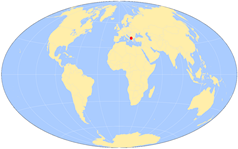
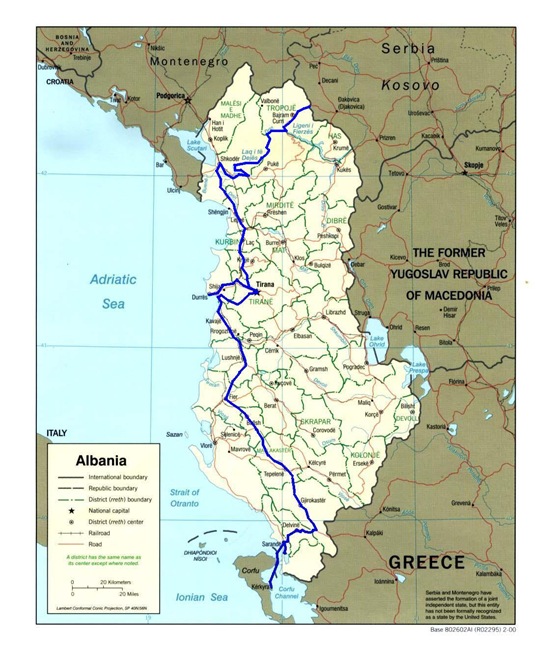

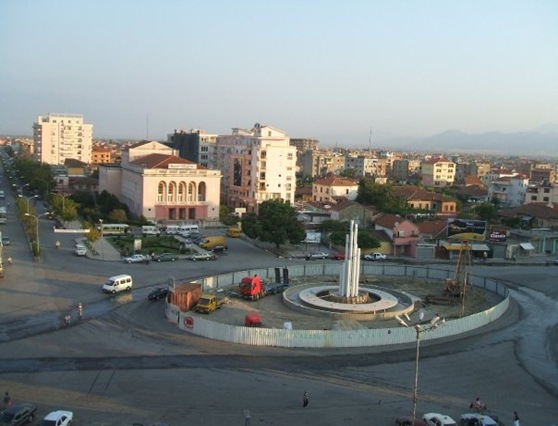
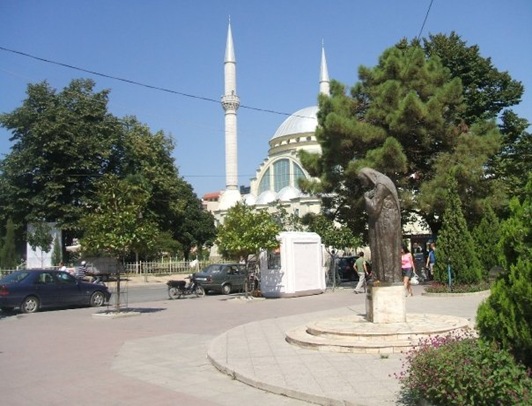
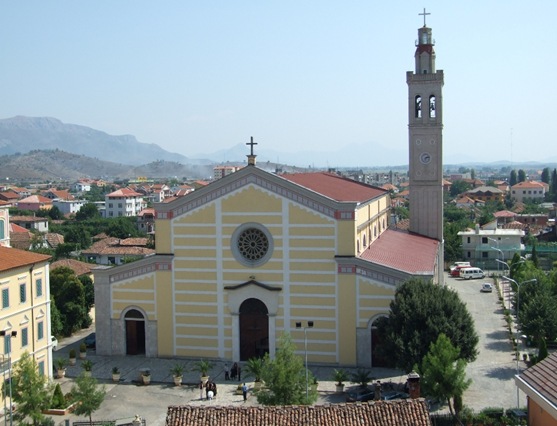
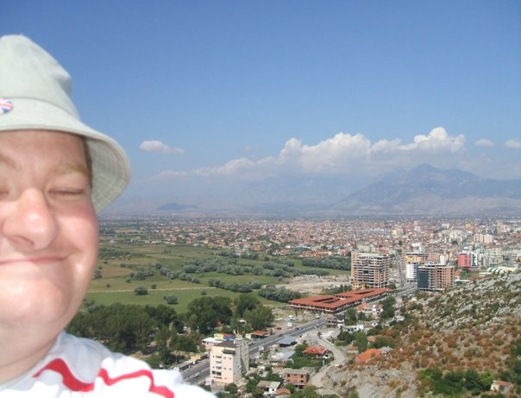
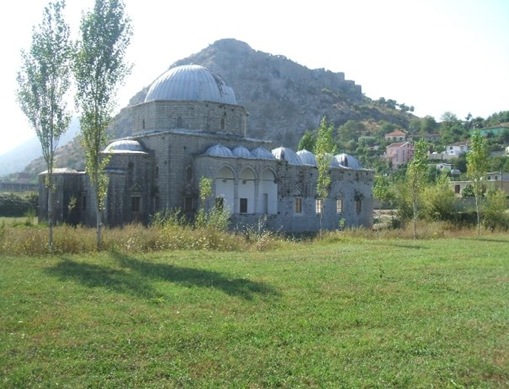
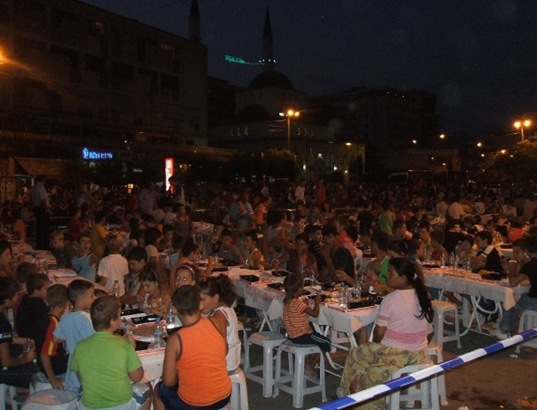
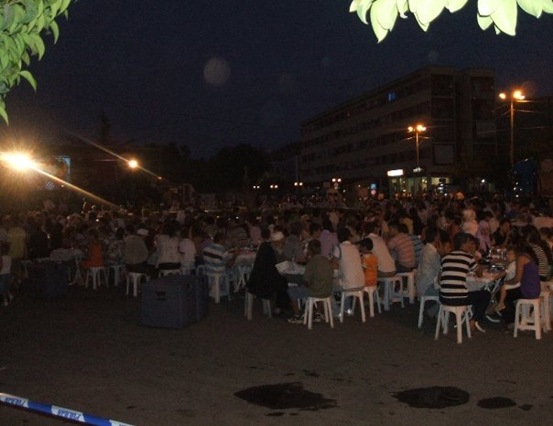
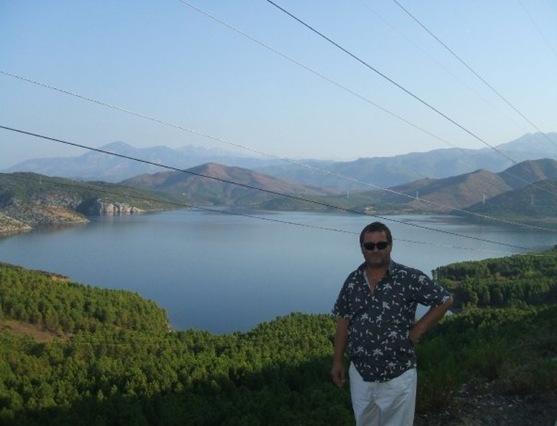

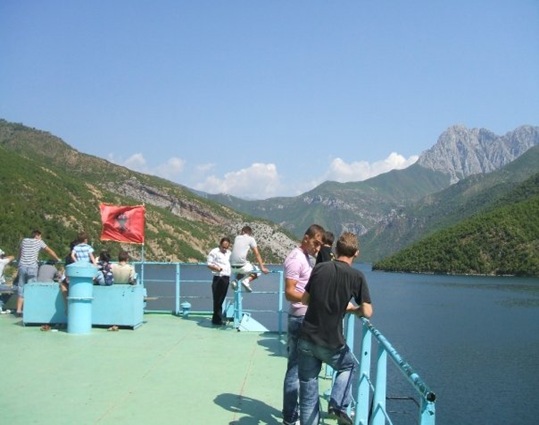
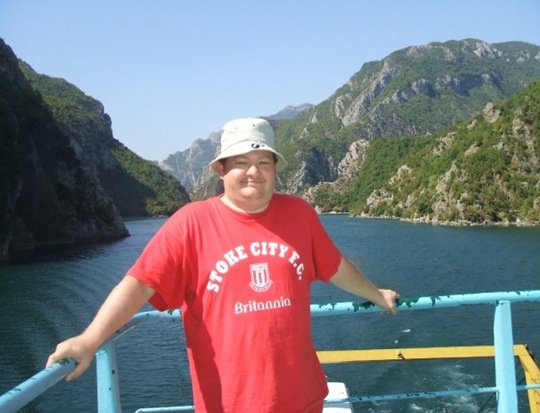

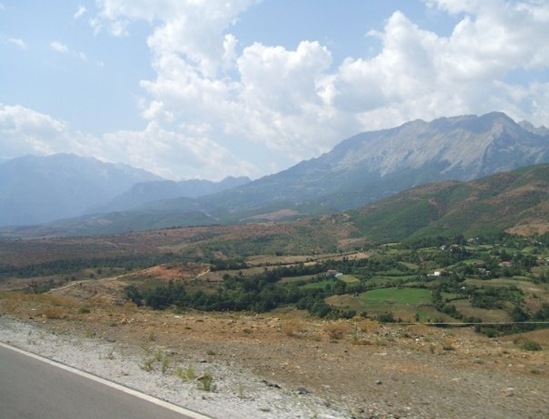
No comments:
Post a Comment